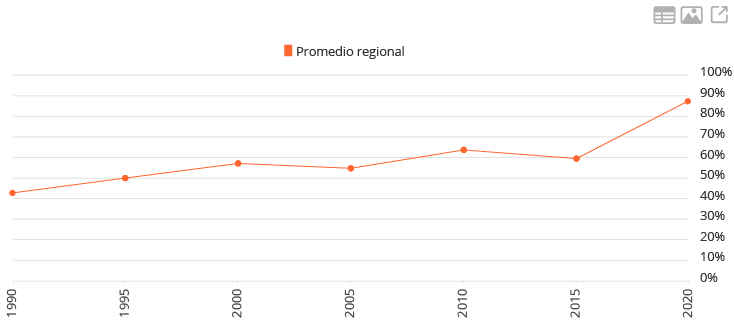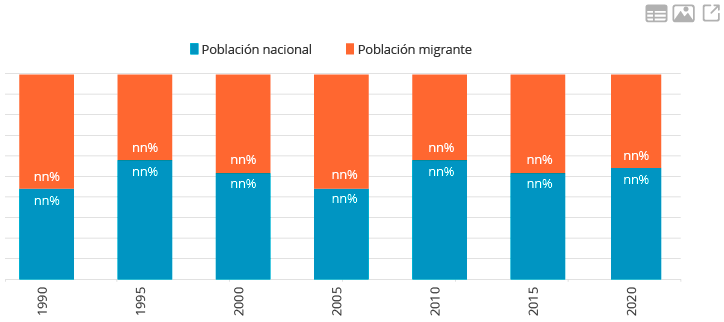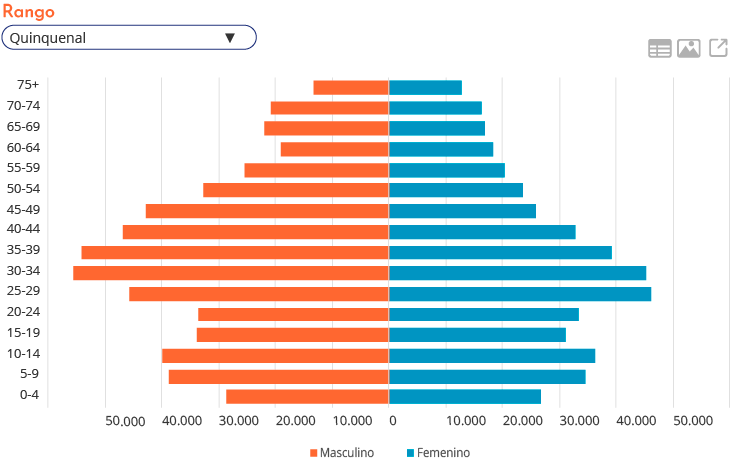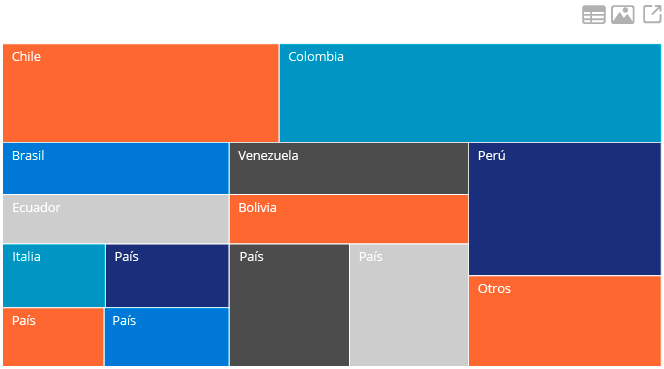Regional group
Latin America
and the Caribbean
Three migratory patterns have prevailed in the region: extra-regional emigration, overseas immigration and intraregional exchanges. While intra-regional exchanges have increased, international migratory flows have greatly diversified. The following areas pose challenges to guaranteeing the right to education of people on the move in the region: regulatory frameworks, migratory status, documentation and access to the education system, planning and management of education systems, educational inclusion and recognition of studies, degrees and diplomas.
Share

Regional group context
145.195.777
Inhabitants75%
Literacy rate67%
% of population 20+with completed secondary
Migrant population
Lorem ipsum dolor sit amet, consectetur adipiscing elit. Donec et malesuada ipsum, eget aliquam est. Nam facilisis nibh in purus facilisis cursus. Fusce a tincidunt nunc, at faucibus urna. In aliquam scelerisque eros, eget hendrerit sem pharetra et. Integer vel lacinia velit. Mauris cursus, mi et maximus molestie, risus tortor mollis enim, ac dignissim velit est ac urna. Nullam venenatis mattis sem et ullamcorper. Quisque eget accumsan nulla.
Sources: Phasellus efficitur, nibh ac pretium ultrices, risus dui blandit dui, ac venenatis mauris tortor facilisis erat.

Migrant population as a percentage of the total population
Lorem ipsum dolor sit amet, consectetur adipiscing elit. Donec et malesuada ipsum, eget aliquam est. Nam facilisis nibh in purus facilisis cursus. Fusce a tincidunt nunc, at faucibus urna. In aliquam scelerisque eros, eget hendrerit sem pharetra et. Integer vel lacinia velit. Mauris cursus, mi et maximus molestie, risus tortor mollis enim, ac dignissim velit est ac urna. Nullam venenatis mattis sem et ullamcorper. Quisque eget accumsan nulla.
Sources: Phasellus efficitur, nibh ac pretium ultrices, risus dui blandit dui, ac venenatis mauris tortor facilisis erat.

Distribution of the migrant population according to sex and age ranges
Lorem ipsum dolor sit amet, consectetur adipiscing elit. Donec et malesuada ipsum, eget aliquam est. Nam facilisis nibh in purus facilisis cursus. Fusce a tincidunt nunc, at faucibus urna. In aliquam scelerisque eros, eget hendrerit sem pharetra et. Integer vel lacinia velit. Mauris cursus, mi et maximus molestie, risus tortor mollis enim, ac dignissim velit est ac urna. Nullam venenatis mattis sem et ullamcorper. Quisque eget accumsan nulla.
Sources: Phasellus efficitur, nibh ac pretium ultrices, risus dui blandit dui, ac venenatis mauris tortor facilisis erat.

Percentage composition of the migrant population according to origin
Lorem ipsum dolor sit amet, consectetur adipiscing elit. Donec et malesuada ipsum, eget aliquam est. Nam facilisis nibh in purus facilisis cursus. Fusce a tincidunt nunc, at faucibus urna. In aliquam scelerisque eros, eget hendrerit sem pharetra et. Integer vel lacinia velit. Mauris cursus, mi et maximus molestie, risus tortor mollis enim, ac dignissim velit est ac urna. Nullam venenatis mattis sem et ullamcorper. Quisque eget accumsan nulla.
Sources: Phasellus efficitur, nibh ac pretium ultrices, risus dui blandit dui, ac venenatis mauris tortor facilisis erat.

Regional overview
Mobility data
Indicators' Matrix
The quantitative component is based upon the need to monitor the right to and in education. Therefore, it is designed to monitor the conditions for education and the entire school journey. Thus, it operates according to a matrix logic, articulating the five dimensions (Affordability/Availability, Accessibility, Acceptability, Adaptability and Accountability) with the structural cut-off and the three analytical cut-offs (access, permanence and progression and graduation). This makes it possible to evaluate progress in a particular dimension of the right to education, while providing information on specific behaviors in the school itinerary, which structures a view that reflects global as well as particular aspects. The final result consists of twenty indicators.
Affordability |
Accessibility |
Acceptability |
Adaptability |
Accountability |
|
|---|---|---|---|---|---|
Structural |
1. Legal framework | 5. Public strategies | 10. Public policies | 16. Regulatory framework | 19. Accessibility to data 20.Reporting countries |
Access |
2. Gross coverage rate | 6. Enrolled foreign students 7. Primary timely enrollment 8. Distribution of foreign students |
11. Educational establishments | 17. Leveling/adaptation courses access | |
Permanence |
3. Transition rate | 9. Repetition (retention) rate | 12. Lag 13. Intra-annual dropout 14. Inter-annual dropout 15. Parity index |
||
Graduation |
4. Graduated foreign students | 18. Academic achievement | |||




